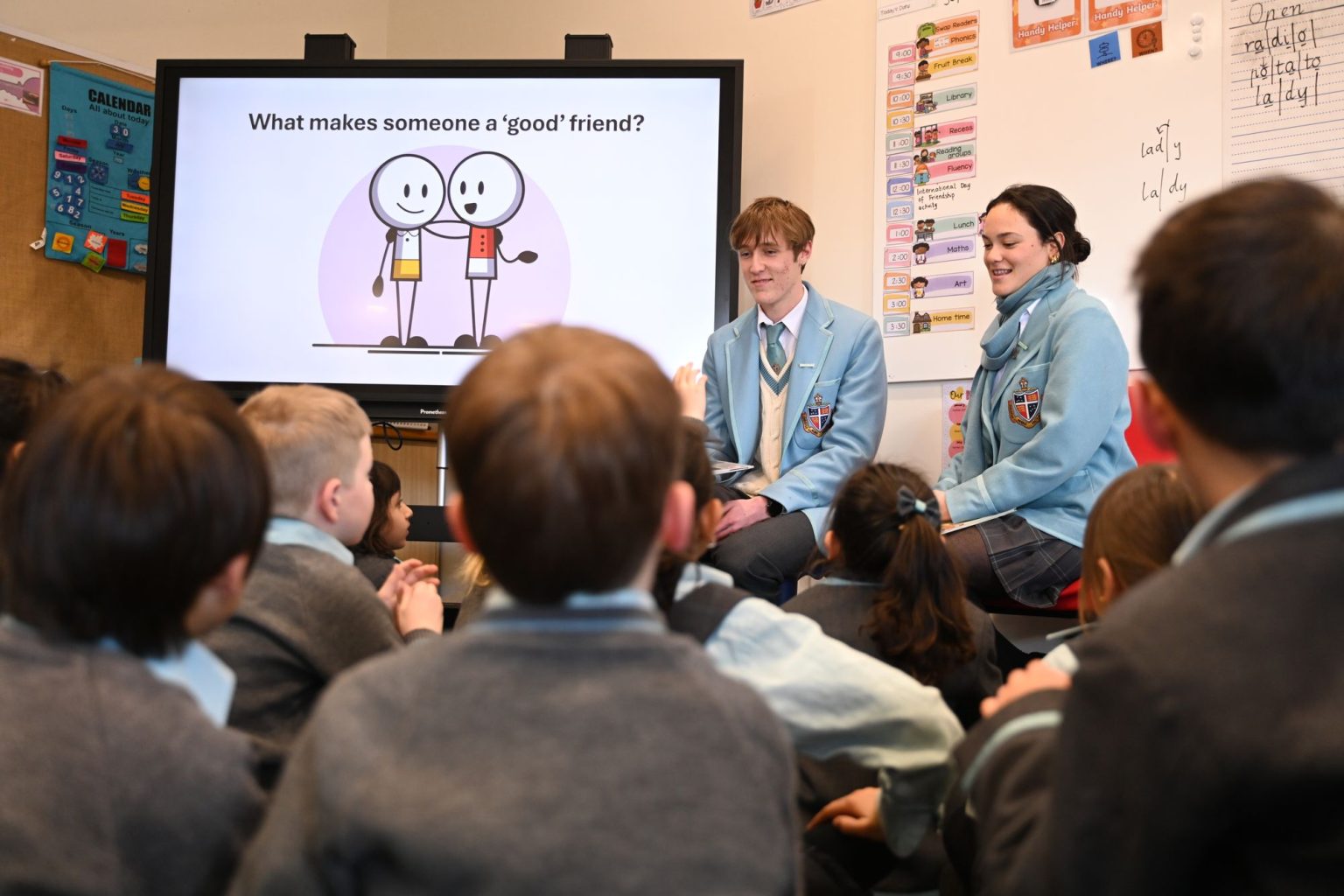About PEEC
What is PEEC?
PEEC is an acronym for Positive Education Enhanced Curriculum. It is a curriculum designed to support teachers and add value to their practice and experience in delivering Positive Education.
PEEC is not a replacement for the implicit Positive Education that takes place daily through pastoral care, coaching, teaching and every interaction that a teacher has with a student. Rather, it is an explicit curriculum designed for schools to lead dedicated Positive Education classes, where students can be taught the key concepts of wellbeing so they can live healthy and fulfilling lives.
Who is PEEC for?
PEEC is for any school that is committed to the wellbeing of their students. Ideally, schools involved will have some understanding of Positive Education concepts and may have undergone training in this regard.
What year levels can use PEEC?
We have created content suitable for Early Childhood (four years of age) all the way to Year 12 (18 years of age).
How many lessons are in PEEC?
There are 60 individual teachable moments for the Early Years and 20 lessons per year level from Foundation (five years of age) through to Year 12.
Each lesson from Foundation to Year 12 contains a ‘Boost It!’ option, expanding each individual lesson into two lessons.
This means our Early Years to Year 12 curriculum contains over of 560 lessons worth of content so teachers are well-equipped to support the wellbeing of the students in their care.
What other resources are included with a PEEC subscription?
There are a number of resources in our PEEC program such as:
- a research-based developmental scope and sequence for Positive Education
- over 280 lessons from Early Learning (4 years of age) through to Year 12 (18 years of age)
- Boost-It options that extend lessons to over 560 lessons worth of content
- worksheets and scaffolds
- a series of free professional learning videos to aid your teachers’ understanding of PEEC
- a glossary of research-based teaching tools founded on High Impact Teaching Strategies
- lists of picture books for each topic
- research summaries for every topic
- curriculum mapping for ACARA, EYLF, PYP, MYP, IB and SEL
Being part of the PEEC Community also gives you access to a range of free supplementary and complementary materials. These include:
- a series of short professional learning videos about PEEC
- animated ‘Brain Break’ and ‘Mindful Moment’ videos
- excerpts for your school newsletters for every PEEC Enrichment Module (topic)
- posters and games to aid your use of yoga in the classroom
- research summaries about Positive Education
- ‘PEEC Story Time’ videos featuring some of our favourite picture books
- printable mindful colouring pages

Curriculum Structure & Content
How long is each lesson?
Our Early Years curriculum contains bite-sized activities that could range from 10 to 15 minutes in length. Our Foundation to Year 12 lessons are designed to be approximately 45 minutes in length. However, the delivery of this content is flexible and could easily be shortened or lengthened depending on your school’s timetable.
What do you mean by explicit, stand-alone lessons?
Implicit teaching involves weaving the concepts of Positive Education within other subject areas. For example, talking to students about grit and persistence in Mathematics or resilience during sport coaching. Whereas explicit teaching involves teaching dedicated Positive Education classes, with topics ranging from Empathy and Compassion to Motivation and Sense of Meaning.
What topics are included?
The following table depicts the structure of the Domains and Enrichment Modules within PEEC.

This table doesn’t depict the only way explicit Positive Education can be structured. For students to form a deep understanding of each topic, there is a need to attempt a balance between creating breadth (exploring as many beneficial topics within Positive Education as possible) and depth (allowing time for students to explore concepts in a meaningful way).
What topics do you teach at different age groups?
The teaching of our enrichment modules, or topics, is not evenly-weighted across each year level. We used developmental research related to Social and Emotional Learning, as well as the collective practice wisdom of a number of experienced teachers, to determine where these concepts could ideally be taught.
For example, our research shows that the topic of Emotional Intelligence needs to be heavily taught in the younger years, exploring Core Values is a concept largely suited to older age groups, and themes involved in Leadership and Teamwork should be taught across the board.
In what order should I teach these topics?
The emphasis you place on each topic, and the order in which each Enrichment Module is taught, should be determined by your school context. However, we do provide a suggested practical sequence as part of our full curriculum that can be used as a guide. Our Suggested Sequence and ‘Getting Started with PEEC’ webinar are great resources that can help schools customise the order in which the topics are taught.
Can you share your Developmental Scope and Sequence?
We have created a developmentally-appropriate scope and sequence chart that includes developmental outcomes across all year levels from Early Years (four years old) through to Year 12 (18 years old). This Scope and Sequence has been mapped across a number of frameworks, including the Australian Curriculum, Early Years Learning Framework, Social and Emotional Learning and the International Baccalaureate programme (PYP, MYP and DP). This Scope and Sequence is available as part of the full version of our curriculum.
How do the PEEC phases match to international curriculums?
The table below shows how the PEEC phases matches with the British and American curriculums.


Teaching and Implementation
What kinds of strategies do your lessons employ?
Our lessons utilise a range of hands-on high impact teaching strategies that have been scientifically proven to enhance student understanding. A complete list of strategies is provided as an appendix in the full version of the curriculum.
Do I have to teach every lesson exactly as it is written?
No – we recommend that you tailor each lesson to the specific students in your class. If you know they won’t respond well to a whole class debate, then change the activity to something more suitable that still meets the desired learning outcomes for that lesson. Lessons can easily be changed by using the ideas and activities listed on Teaching Tools page in the curriculum Appendix.
Should Positive Education be taught on a weekly or fortnightly basis?
In essence, yes! Students at Geelong Grammar School engage in timetabled Positive Education lessons on a weekly or fortnightly basis, depending on their age and stage. However, this will vary according to your particular school context.
What other resources would you recommend to use alongside the curriculum?
Each lesson contains a prompt for teachers to identify a Brain Break and a Mindful Moment that they believe would best suit their class. Brain Breaks are escalating or positively priming activities that enhance positive relationships within your classes and generate positive emotions. Mindful Moments are de-escalating, calming activities designed to centre students. Copies of our ‘Brain Breaks’ and ‘Mindful Moments’ pocketbooks can be ordered online.
How do I find the time?
In order to find the initial time in the school timetable for Positive Education lessons, we decided to teach slightly less Mathematics and Science. However, this did not have a negative impact on students’ academic results. As the research shows, if you improve student wellbeing, you also improve their grades.



